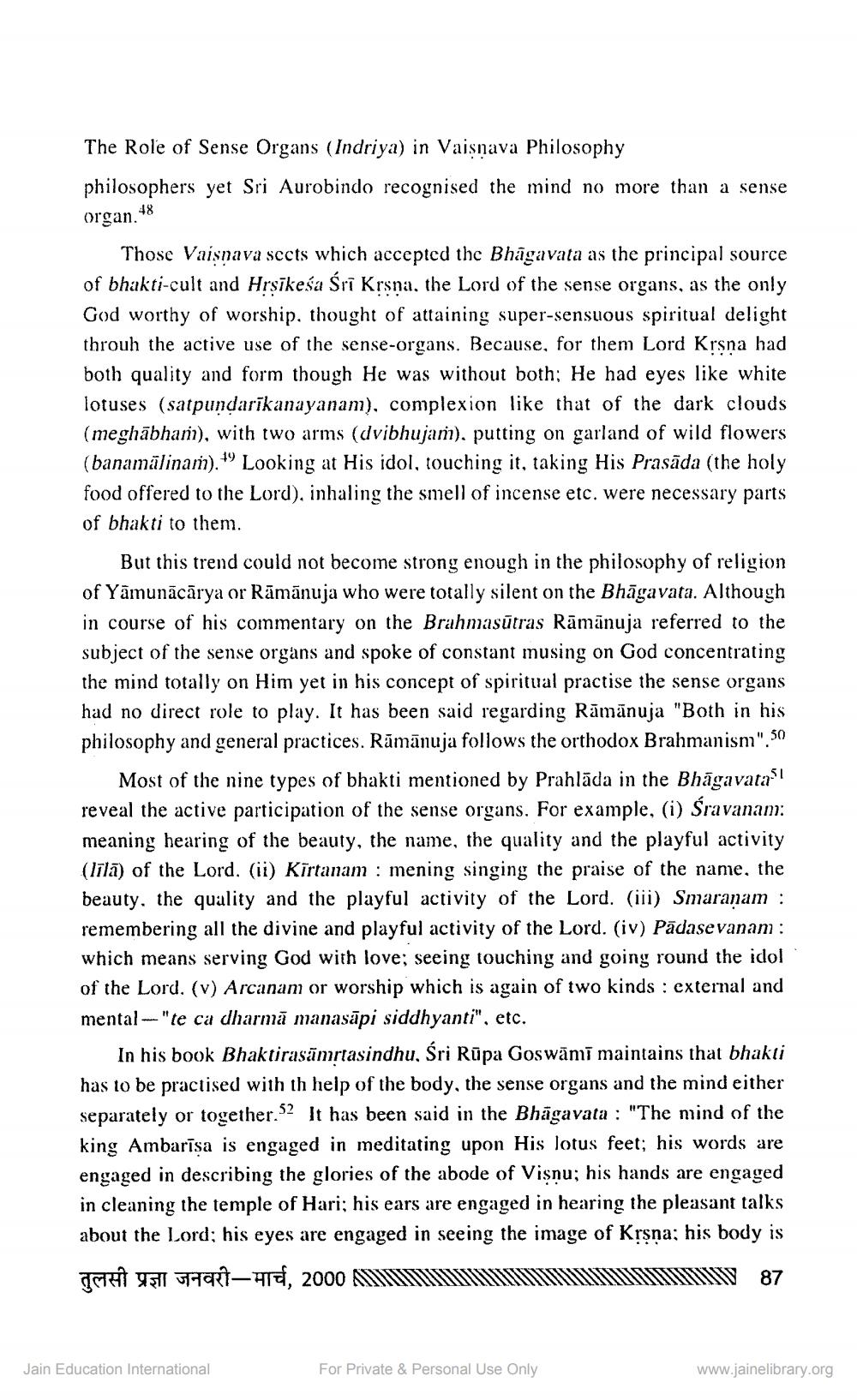________________
The Role of Sense Organs (Indriya) in Vaisnava Philosophy
philosophers yet Sri Aurobindo recognised the mind no more than a sense
48
organ.
Those Vaisnava sects which accepted the Bhagavata as the principal source of bhakti-cult and Hrṣīkeśa Śrī Kṛṣṇa, the Lord of the sense organs, as the only God worthy of worship, thought of attaining super-sensuous spiritual delight throuh the active use of the sense-organs. Because, for them Lord Krsna had both quality and form though He was without both; He had eyes like white lotuses (satpundarikanayanam), complexion like that of the dark clouds (meghabham), with two arms (dvibhujam), putting on garland of wild flowers (banamālinam). Looking at His idol, touching it, taking His Prasada (the holy food offered to the Lord), inhaling the smell of incense etc. were necessary parts of bhakti to them.
49
But this trend could not become strong enough in the philosophy of religion of Yamunācārya or Rāmānuja who were totally silent on the Bhāgavata. Although in course of his commentary on the Brahmasutras Rāmānuja referred to the subject of the sense organs and spoke of constant musing on God concentrating the mind totally on Him yet in his concept of spiritual practise the sense organs had no direct role to play. It has been said regarding Rāmānuja "Both in his philosophy and general practices. Ramanuja follows the orthodox Brahmanism",50
Most of the nine types of bhakti mentioned by Prahlada in the Bhāgavata§1 reveal the active participation of the sense organs. For example, (i) Śravanam: meaning hearing of the beauty, the name, the quality and the playful activity (līlā) of the Lord. (ii) Kīrtanam mening singing the praise of the name, the beauty. the quality and the playful activity of the Lord. (iii) Smaraṇam : remembering all the divine and playful activity of the Lord. (iv) Pādasevanam : which means serving God with love; seeing touching and going round the idol of the Lord. (v) Arcanam or worship which is again of two kinds external and mental-"te ca dharmā manasāpi siddhyanti", etc.
In his book Bhaktirasāmṛtasindhu, Śri Rūpa Goswāmī maintains that bhakti has to be practised with th help of the body, the sense organs and the mind either separately or together.52 It has been said in the Bhagavata: "The mind of the king Ambarīṣa is engaged in meditating upon His lotus feet; his words are engaged in describing the glories of the abode of Visnu; his hands are engaged in cleaning the temple of Hari; his ears are engaged in hearing the pleasant talks about the Lord; his eyes are engaged in seeing the image of Krsna: his body is
तुलसी प्रज्ञा जनवरी-मार्च, 2000
87
Jain Education International
For Private & Personal Use Only
www.jainelibrary.org




